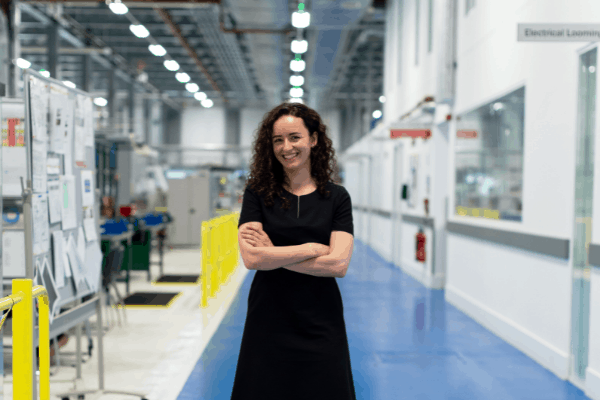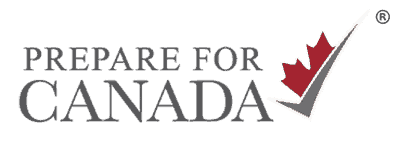
A LinkedIn profile is essential for professionals who want to build their brand, expand their network, and find employment. For newcomers, these LinkedIn tips and advice will help you to create a professional profile and:
- Showcase your work achievements
- Highlight your international experience
- Make connections with others in your industry and in the location where you plan to settle.
Linda Ryan is the National Program Manager with BCCA-Integrating Newcomers, a government funded, Canada-wide, pre-arrival career coaching service for high skilled construction professionals immigrating to Canada (*BCCA-IN).
Advertisement:
A career and certified performance coach, she and the BCCA-IN team specialize in helping newcomers plan for, and achieve, employment success, no matter what city or province they are moving to. When it comes to looking for a career, Ryan provides tips on how newcomers can use LinkedIn effectively and propel their job search.
Essential Tips to Craft a Professional LinkedIn Profile
1. Create or Update Your About Section
Advertisement:
Your LinkedIn profile represents your personal brand. Therefore, a professional profile is the best way to project your desired image.
Prepare for Canada: What are the important elements that newcomers should include in the About section on LinkedIn?
Linda Ryan: This section of your profile is a combination of your career biography and your value pitch to potential employers and contacts. It should be concise so that it doesn’t go below the line and force the reader to click the ‘More…’ button. It will take time to get this right, so write, proof and rewrite it several times.
Once you’ve got it right, you can add to it and reuse your pitch on your resume, in networking conversations, interviews etc. The key things you should describe are:
- Your profession e.g. Civil Engineer, Nurse, Accountant, Business or Project Manager etc.
- Level of education
- The industries you’ve worked in e.g. construction, healthcare, logistics, etc.
- The size and scope of projects you’ve been involved in (quantify them)
- If you’re progressing (‘challenging’) or have acquired any Canadian credential (with a relevant professional body)
- If you’ve registered for membership with a relevant professional association in Canada, and
- That you’re a ‘Canadian Permanent Resident’ (or other legal status).

2. Capture Your Good Side
Adding a high-quality headshot to your LinkedIn profile will make you more visible to employers who are searching for people with your skills and experience. According to LinkedIn, members with profile pictures receive up to 21 times more profile views than those without a picture.
Advertisement:

3. Make Your Headline Attractive
You need to keep the headline of your LinkedIn profile shorter than 120 characters. It’s even better if it’s shorter. Include relevant keywords used in your profession. This will allow potential employers to find your page with ease.
You also need to make sure that your summary is short, concise, and interesting. A hiring manager will read hundreds of resumes and you need to make sure that you stand out.
4. Highlight Your Relevant Work Experience
Listing your past experience is important for your LinkedIn profile. However, be mindful that some of your past experiences may not relate to the career you want to pursue in Canada.
List your previous jobs that are relevant to your current career aspirations. Focus on the workplaces, experiences, and credentials that directly relate to the types of jobs you want to pursue.
It’s also essential to update your current position. For example, did you receive a promotion, win an award, publish an article, or complete an innovative project? If so, it makes sense to update your profile to reflect your achievements.
Showcase your professional career, growth, and accomplishments in the Summary and Experience sections of your profile.
Prepare for Canada: What should newcomers be aware of when sharing information about their experience?
Linda Ryan: Newcomers often apply for a range of roles and seniority to test the job market. It’s an understandable tactic and a valuable learning exercise but don’t spread yourself too thin. Be careful about the range of roles you apply for. Your LinkedIn profile and more specifically your Experience section should support the roles that you apply for.
“Less is more” when it comes to submitting job applications and I’d say the same for the level of detail you list in your Experience section. This will work better than providing too much information. Include three to five bullet points that sell your:
- Seniority
- Technical skills, and
- Unique achievements.
5. Update Your Professional Skills
Certifications are eye-catching. So add notable certificates, skills, or abilities that you possess. Many training programs or skills will have badges that you can add to your LinkedIn profile.
Update this section regularly or whenever you learn a new skill. These skills could be terms that the LinkedIn algorithm will pick up and help recruiters to search for and find you. You should also delete skills that are no longer relevant to your career interests or are outdated.
Watch now to get architecture and licensing tips for newcomers:
Related Posts:
Working in Canada |A Guide to Land Your Dream Job!
3 Ways to Gain Canadian Work Experience
Build Your Professional Network Before You Arrive in Canada
Networking Interview Questions to Help Your Career
Architect Jobs, Salaries, and Careers in Canada | What Newcomers Must Know
How I Used LinkedIn to Help Find Work in Canada
Crafting Your Job Search Action Plan to Work in Canada
6. Update Your Location Section
Updating your location is vital when building your LinkedIn network.
Prepare for Canada: What advice do you have for prospective newcomers who have not yet landed in Canada? What location do you suggest they provide on their LinkedIn profile?
Linda Ryan: Yes, we are living in an era of increased remote work possibilities but still having your home country listed as your LinkedIn location, will hinder rather than help you. Recruiters and employers, even professionals in your industry, will want to connect with ‘local’ peers, so the more local you seem, the more relevant you are (or at least, the more you have in common on a very basic level).
You can get around this by ensuring you list Canadian Permanent Resident or another relevant legal status on your profile (in the Name/Title section) and/or by changing your location to the city/province you’re moving to. Feel free to say “Relocating to X” if you feel that’s more of an accurate reflection of your geographic status.
7. Ask Others to Endorse Your LinkedIn Profile
Your LinkedIn profile comes to life when other professionals endorse your skills and recommend you. It’s also very persuasive when your network speaks for you.
But carefully select who you ask to endorse you. For example, you should only ask people who know your work well to recommend you. Otherwise, you risk putting people in your network in an awkward position. As well, if they don’t know you well, they won’t be able to give a strong recommendation that reflects your experience. The same applies to you when others ask you to provide recommendations, as it puts your judgment to the test.
Prepare for Canada: How valuable are LinkedIn endorsements and recommendations for newcomers?
Linda Ryan: Having peer-to-peer recommendations on your profile and professionals who endorse your skills, is super important for your LinkedIn profile. For newcomers, going through the process of securing these recommendations and endorsements is also the first test of your home-country professional relationships. It’s a valuable indication of who you can count on for references when you’re successfully shortlisted for that first job in Canada!
My best advice is to give freely and hopefully, you’ll receive in return. Seek out and provide recommendations and endorsements for past colleagues (be authentic) and in return, you will receive a percentage back.
Also, be prepared to draft a factual recommendation and approach a past manager or colleague to see if they’d be happy to post it on your LinkedIn profile. It makes things easier if you’ve proactively scripted a recommendation they can edit and use.
From a recruiter’s perspective, the Recommendations and Endorsements section of LinkedIn profiles are great indications of the truth in a candidate’s resume. These elements take time to gather, so the sooner you invest energy in getting them done pre-arrival, the better!
8. Create a Personal LinkedIn Profile URL
By default, LinkedIn will give you a URL that can be a little clunky. However, you can edit this to make it cleaner. For example, you can use your full name if it has not already been taken by someone else. To edit your URL:
- Click the ME icon at the top right-hand corner of your profile
- Click View Profile
- On your profile page, click Edit Public Profile and URL
- Under Edit URL, click the Edit icon
- Type the last part of your new custom URL in the text box
- Click Save.
If your full name has already been used, consider a variation including your middle initial. You can add your personal profile URL to your resume and online job applications. This step is important because it allows you to add this link to your resume and online job applications.
9. Leverage Strategies to Build Relationships on LinkedIn
LinkedIn provides value by allowing you to network and build authentic relationships with peers in the location or industry that you want to enter or are in.
Linda Ryan
Prepare for Canada: What are some specific actions that newcomers can take to build LinkedIn relationships?
Linda Ryan: Some simple actions for building relationships on LinkedIn include:
- Making meaningful and polite comments on articles
- Adding positive comments to other people’s comments
- Using the Like icons on posts or articles.
And remember, never get involved in political debates, opinion snowballs, or contentious conversations. LinkedIn is a professional forum, not a personal soapbox!
10. Know How to Connect with Others on LinkedIn
When you add someone new to your network, make sure that you send a message explaining the reason you would like to connect with them. If you don’t already know them, and you only send the default connection, they will likely ignore your request.
Your message does not need to be long or detailed. But when you add a personal touch it ensures that the person that you are contacting will see value in the connection.
Prepare for Canada: What advice do you have for newcomers about how to connect with others on LinkedIn?
Linda Ryan: LinkedIn is a professional social networking forum. Yes, you can leverage it when job hunting but it’s primary purpose is sharing, learning and connecting. So when using it to connect with peers in your industry, try these simple tricks:
- Send a connection request and don’t add a note. What have you got to lose!
- Send a connection request to a recruiter summarizing why you’re a solid fit for the role they’re advertising and ask “if it’s possible to connect to learn more”.
- Send a connection request to a peer and add a custom note.
Sample Connection Requests:
Hi <insert first name or contact>, I am moving to the area and would value some local industry insights. Any thoughts?
Hi <insert first name of contact>, it looks like we share similar project experience. Look forward to connecting. Thanks!
I’m looking to identify key challenges that local industry is facing right now and how I could turn them into opportunities. Any thoughts on the top two-three challenges?
Hi <insert first name of contact>, I’m a<n> <insert your profession title> moving to <insert city that contact is in>. Would you have 5 minutes to share some local industry insights? Thanks.
I’m impressed by your career trajectory. Would you be willing to share two or three tips on what you did or didn’t do that’s helped you most? I’d value your advice.
I’d consider you a local industry expert! What’s your best advice on the top two or three opportunities/challenges unique to the industry?
Prepare for Canada: What final advice would you give to newcomers about using LinkedIn most effectively?
Linda Ryan: Try not to achieve perfection initially with your LinkedIn profile. But please follow the tips above before you start connecting and applying for jobs. Like your career, your profile will evolve over time. Be prepared to revisit it as you network, build connections, move locations, acquire courses, secure credentials and join professional organizations.
An effective LinkedIn profile is essential to create your professional brand while you conduct your job search. These tips will also help to propel your job search and build your network in Canada.
Learn More about BCCA-IN
*The BCCA-Integrating Newcomers program is a free, pre-arrival, Canada-wide service, focused on helping high-skilled newcomers explore and build successful construction careers. Services include one-on-one career guidance, tailored resume, cover letter, LinkedIn advice, and an in-depth skills and education assessment to help newcomers focus on the best career, credentials and connections activities. The Integrating Newcomers team not only has multi-industry experience but are also immigrants who have built successful careers in Canada.
Corinna Frattini is the content marketing strategist at Prepare for Canada and contributes articles related to working in Canada. With a background in human resources and leadership development, her articles focus on what Canadian employers seek and how newcomers can continue their careers in Canada.

